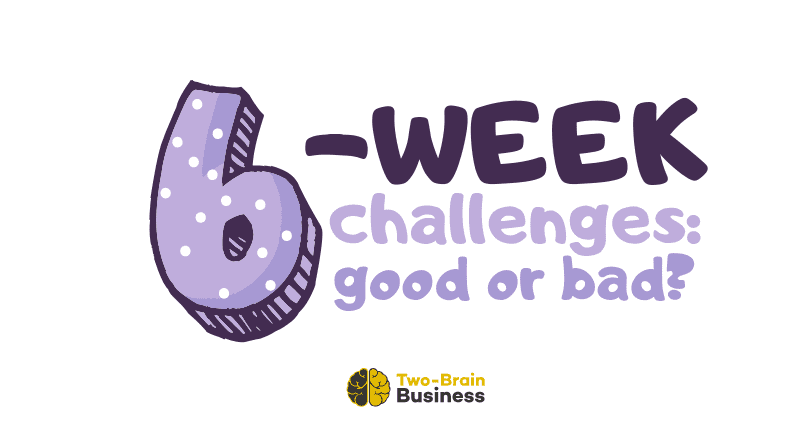Most CrossFit Gyms (and other microgyms) have encountered the Six-Week Challenge: a short-term introduction to high-intensity exercise for new clients. Some love it; some hate it. But like CrossFit itself, there are dozens of variations of the Six Week Challenge available. And they all have one thing in common: they’re mostly set up as a marketing strategy. Because, as a marketing strategy, six-week challenges work.
But most gyms fail to retain the clients when the six week challenge ends. And since The New-You Challenge popularized the idea years ago, others have added their own twists–sometimes with long-term negative results. Bait-and-switch promises; rapid turnover; and outright lying to potential clients has tarnished the strategy’s image among gym owners. But potential clients are still attracted to the idea of a Six-Week Challenge.
At Two-Brain, we teach gym owners how to use Facebook marketing effectively. But we don’t teach slimy gimmicks. We want clients to find what they seek; and we don’t want gym owners to sacrifice their values. It’s possible, and we have the data to prove it. Here’s how to separate the baby from the bathwater with Six-Week Challenges:
- Make them personalized. Each client’s six-week challenge should be different, because they’re all starting from a different spot. That means Amy’s six-week challenge and Marcy’s six-week challenge will include a different mix of nutrition coaching, personal training and group training. But both will be effective if they’re tailored to the client.
- Start with a consultation. Instead of selling a group-entry option, have every new client book an appointment to talk with a coach. Then make them a prescription according to THEIR goals, instead of trying to sell a general group workout plan.
- Make them premium. Personalized service is the path to being commoditized brands like Orange Theory. But it also takes more of the coach’s time. Make sure your gym has the pricing and service structure to sell premium services (usually $500-800 for the first six weeks.) If you don’t know how or what to sell for $500, sign up for the Incubator here. We’ll teach you. (It’s not a sales trick: you actually have to build and sell amazing services).
- Follow the Prescriptive Model: measure what the client cares about (tip: it’s not the Functional Movement Screen.) Measure again after the six-week challenge ends. Prescribe a new six-week challenge, or enrollment into your regular program: whatever is best for the client.
The industry “experts” who criticize Six-Week Challenges usually don’t know how to separate the marketing from the negative stuff. That means they usually don’t understand Facebook marketing at all. We take a “two-brained” approach to every strategy:
First, we want to know what works. And Facebook marketing definitely works.
Second, we want to find ways to deliver what works in a professional way. Six-week challenges, done individually, provide excellent solutions for your clients.
Introducing 30 people into a high-intensity group exercise class at a time? That doesn’t work. You’ll lose your current clients along with the new ones. Bait-and-switch, “$0 challenges”? Same. Your reputation will suffer. But an effective marketing strategy doesn’t have to be slimy. Keep the marketing, AND the clients, by doing it the right way. We teach you step-by-step in the Incubator.

